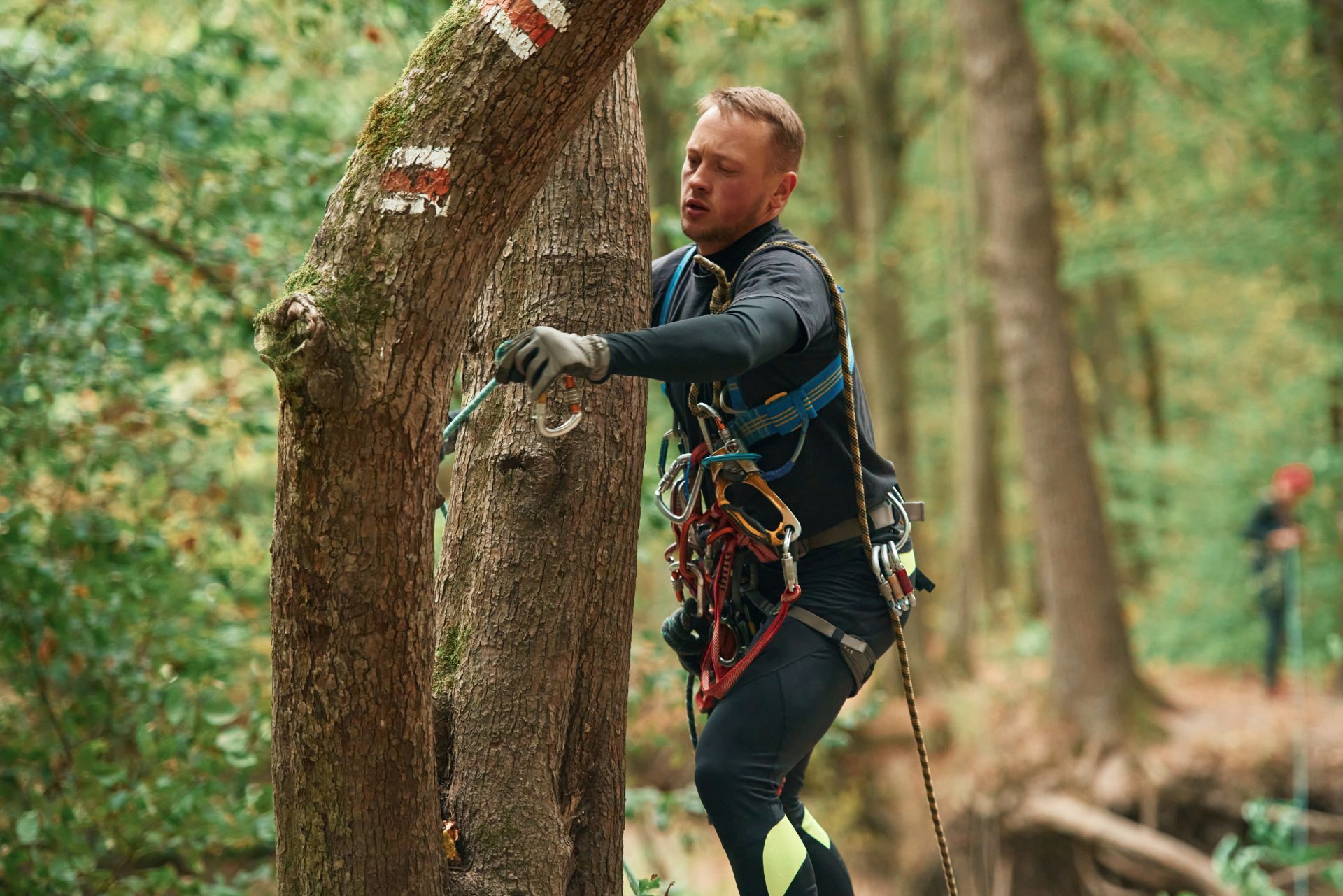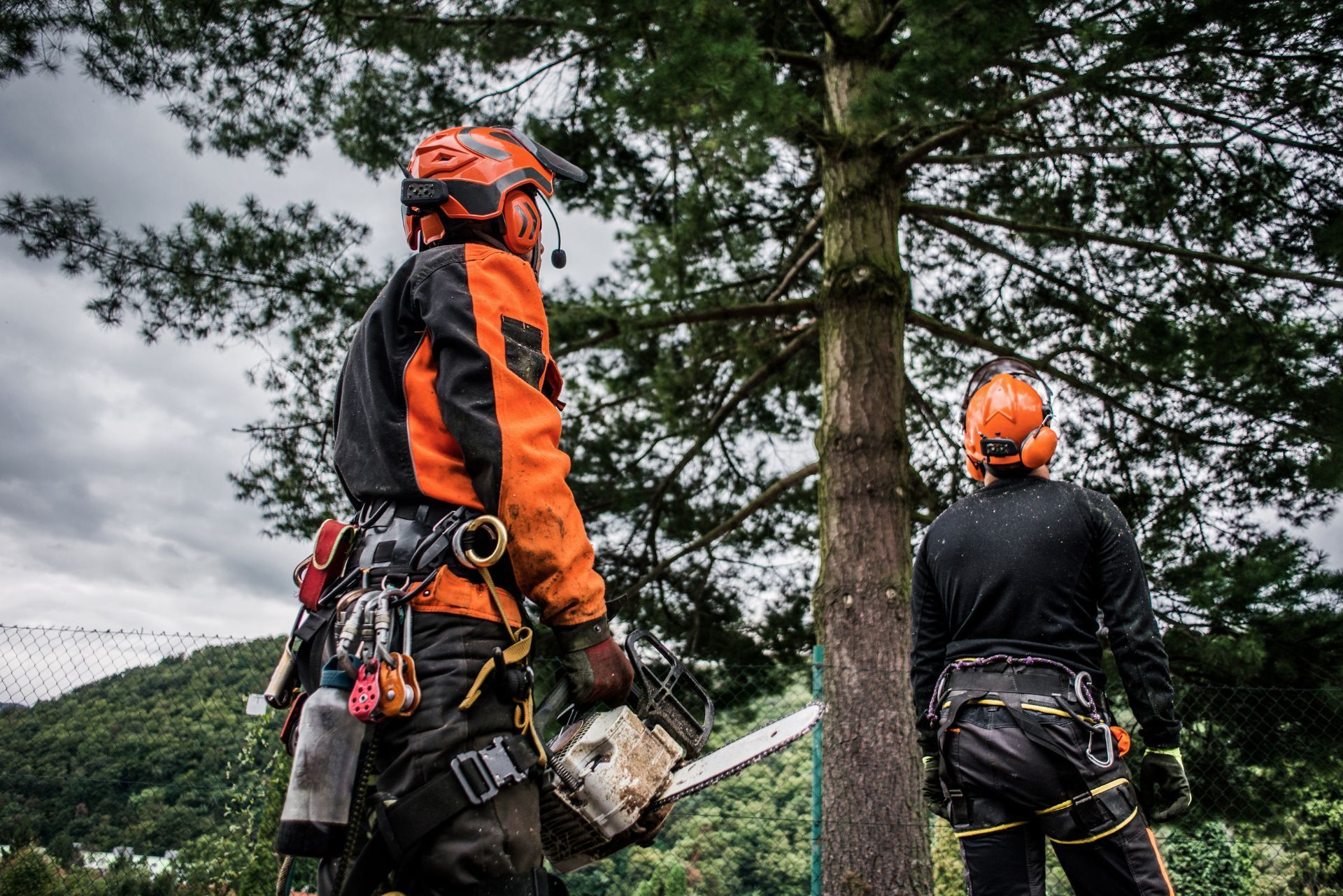Top 3 Recommended Policies
Index
Contact Us
Phone
Location
In the heart of the Midwest, Indiana boasts a rich tapestry of natural beauty, making it an ideal location for arborists. However, with the beauty of nature comes the responsibility of maintaining it. Arborists play a crucial role in caring for trees and landscapes, but they also face unique risks in their profession. This is where Indiana arborist insurance comes into play. Understanding the various aspects of this insurance is essential for any arborist looking to protect their business and livelihood.
What is Arborist Insurance?
Arborist insurance is a specialized form of coverage designed to protect professionals who work with trees and landscapes. This insurance encompasses various risks associated with tree care, including liability for injuries, property damage, and equipment loss. Given the nature of the work, arborists often find themselves in unpredictable environments, making adequate insurance coverage a necessity. The unique challenges faced by arborists, such as working at heights and dealing with heavy machinery, further underscore the importance of having a robust insurance policy in place.
In addition to the physical risks, arborists also navigate the complexities of environmental regulations and local ordinances that can affect their operations. Insurance can provide peace of mind, allowing arborists to focus on their craft without the constant worry of potential liabilities. By ensuring they have comprehensive coverage, arborists can protect not only their business but also their reputation in the community.
Types of Coverage
There are several types of coverage that arborists should consider when seeking insurance. Each type addresses different risks and can be tailored to the specific needs of the business.
- General Liability Insurance: This is the cornerstone of any arborist's insurance policy. It protects against claims of bodily injury or property damage that may occur during the course of work. For instance, if a tree falls and damages a client's property, this insurance can cover the costs.
- Workers' Compensation Insurance: If an arborist employs workers, this insurance is often legally required. It provides coverage for medical expenses and lost wages if an employee is injured on the job.
- Equipment Insurance: Arborists rely heavily on specialized equipment, from chainsaws to chippers. Equipment insurance protects against loss or damage to these essential tools.
Why Arborist Insurance is Essential
Without proper insurance, arborists expose themselves to significant financial risks. Accidents can happen, and the cost of legal claims or medical expenses can quickly escalate. Arborist insurance not only safeguards the business but also enhances its credibility. Clients are more likely to hire professionals who are insured, as it demonstrates a commitment to safety and responsibility. Furthermore, having insurance can also provide access to additional resources, such as risk management advice and support in navigating regulatory requirements.
Moreover, arborist insurance can foster a culture of safety within the workplace. When arborists prioritize insurance and safety protocols, it encourages employees to adhere to best practices, ultimately reducing the likelihood of accidents. This proactive approach not only protects the business financially but also contributes to a more secure working environment, where arborists can thrive and focus on delivering high-quality services to their clients.

Understanding the Risks Arborists Face
Arborists encounter a variety of risks on the job, from the physical dangers of working at heights to the potential for property damage. Understanding these risks is crucial for selecting the right insurance coverage.
Physical Risks
The physical nature of arborist work presents numerous hazards. Climbing trees, operating heavy machinery, and using sharp tools all contribute to a high-risk environment. Falls, cuts, and other injuries are common, underscoring the importance of workers' compensation insurance. In addition to these immediate physical threats, long-term health issues can arise from repetitive motions and exposure to hazardous materials, such as pesticides or tree resins. Arborists must prioritize safety training and proper equipment use to minimize these risks, ensuring they can continue their work without jeopardizing their health.
Liability Risks
Liability risks are another significant concern. If an arborist accidentally damages a client's property or injures a bystander, they could face costly lawsuits. General liability insurance protects against these types of claims, providing peace of mind for arborists as they work. Furthermore, the intricacies of local regulations regarding tree removal and maintenance can complicate matters. Arborists must stay informed about legal requirements and best practices to avoid potential fines or legal repercussions, which can arise from non-compliance with municipal codes or environmental regulations.
Environmental Risks
Weather conditions can also pose a threat to arborists. Storms, high winds, and other environmental factors can create dangerous working conditions. Arborists must be prepared for these risks, and having insurance coverage can help mitigate the financial impact of unexpected events. Additionally, seasonal changes can affect tree health and stability, leading to unforeseen challenges. For instance, heavy snowfall can weigh down branches, increasing the risk of breakage and necessitating immediate attention. Arborists must be equipped with the knowledge and tools to assess tree conditions accurately, ensuring they can respond effectively to environmental changes and protect both themselves and their clients.
Choosing the Right Insurance Provider
Selecting the right insurance provider is a critical step in securing adequate coverage. Not all insurance companies offer the same policies or levels of service, so it's essential to do thorough research.
Factors to Consider
When evaluating potential insurance providers, several factors should be taken into account:
- Experience in the Arborist Industry: Look for an insurance company that specializes in arborist insurance or has experience working with tree care professionals. They will better understand the unique risks associated with the industry.
- Customer Reviews: Research customer feedback and reviews to gauge the provider's reputation. A company with positive reviews is more likely to offer reliable service and support.
- Policy Flexibility: Ensure that the provider offers customizable policies that can be tailored to the specific needs of your business. Flexibility is key in ensuring comprehensive coverage.
Getting Quotes
Once potential providers have been identified, obtaining quotes is the next step. It's advisable to request quotes from multiple companies to compare coverage options and pricing. Be sure to ask about any discounts that may apply, such as those for bundling policies or for having a clean claims history.
In addition to price, consider the details of the coverage provided in the quotes. Look for specifics such as liability limits, deductibles, and any exclusions that may apply. Understanding these elements will help you make a more informed decision. Furthermore, don't hesitate to ask the insurance agents questions about the policy terms and conditions; a reputable provider should be willing to clarify any uncertainties you may have.
Another important aspect to investigate is the claims process of each insurance provider. A provider that offers a straightforward and efficient claims process can save you significant time and stress in the event of an incident. Check if they have a dedicated claims department and what their average turnaround time is for processing claims. This can be a crucial factor in your decision-making, as a responsive claims process can greatly enhance your peace of mind while operating your business.

Cost of Arborist Insurance in Indiana
The cost of arborist insurance can vary significantly based on several factors, including the size of the business, the types of coverage selected, and the level of risk associated with the work performed. Understanding these factors can help arborists budget for insurance expenses effectively.
Factors Influencing Cost
Several key factors influence the cost of arborist insurance:
- Business Size: Smaller businesses may pay less for insurance than larger operations, as they typically have fewer employees and lower overall risk.
- Coverage Types: The more comprehensive the coverage, the higher the premium. Arborists should carefully evaluate which types of coverage are necessary for their specific operations.
- Claims History: A history of frequent claims can drive up insurance costs. Maintaining a good safety record can help keep premiums lower.
Average Premiums
On average, arborists in Indiana can expect to pay anywhere from $500 to $2,500 annually for general liability insurance. Workers' compensation insurance can add an additional cost, often based on payroll and the number of employees. It's important to obtain tailored quotes to get a more accurate estimate of potential costs.
In addition to general liability and workers' compensation, arborists may also consider other types of coverage such as equipment insurance, which protects tools and machinery against theft or damage. This can be particularly important for arborists who rely on expensive equipment like chainsaws, chippers, and stump grinders. Furthermore, professional liability insurance can offer protection against claims of negligence or inadequate work, which can be crucial in maintaining a professional reputation and ensuring client trust.
Another aspect to consider is the geographic location within Indiana, as urban areas may pose different risks compared to rural settings. Arborists working in densely populated regions may face higher premiums due to the increased likelihood of property damage or injury claims. Additionally, seasonal factors can influence the cost; for instance, during storm seasons, the demand for tree removal and maintenance services may surge, impacting both the workload and the associated insurance costs. Understanding these nuances can help arborists make informed decisions regarding their insurance needs and ultimately safeguard their business against unforeseen liabilities.
Common Exclusions in Arborist Insurance
While arborist insurance provides valuable protection, it's essential to be aware of common exclusions that may apply to policies. Understanding these exclusions can help arborists avoid unexpected gaps in coverage.
Typical Exclusions
Some common exclusions in arborist insurance policies include:
- Intentional Damage: Any damage caused intentionally by the arborist or their employees is typically not covered.
- Negligence: If an injury or damage occurs due to gross negligence or failure to follow safety protocols, the insurance may not cover the claim.
- Wear and Tear: General wear and tear on equipment is usually excluded from coverage, as insurance is meant to cover unexpected losses.
Importance of Reading the Fine Print
Before finalizing any insurance policy, arborists should carefully read the terms and conditions. Understanding the fine print can prevent unpleasant surprises when filing a claim. If there are any uncertainties, consulting with an insurance agent can provide clarity.
Additionally, arborists should be aware that certain activities may also be excluded from coverage. For instance, if an arborist engages in activities outside the scope of their licensed operations, such as tree removal in hazardous conditions without proper safety measures, they may find themselves without coverage. It's crucial to stay informed about the specific activities that are included in the policy to ensure compliance and protection during operations.
Moreover, the geographical limitations of a policy can also be a significant factor. Some insurance providers may restrict coverage to specific regions or exclude certain high-risk areas prone to natural disasters, such as hurricanes or wildfires. Arborists working in these regions should inquire about the specifics of their coverage and consider additional policies or endorsements that might be necessary to safeguard their business against these unique risks.
Best Practices for Arborists to Mitigate Risks
While insurance is a vital safety net, taking proactive steps to mitigate risks can help reduce the likelihood of accidents and claims. Arborists can implement several best practices to enhance safety and minimize potential liabilities.
Safety Training
Investing in regular safety training for all employees is crucial. Training should cover proper equipment usage, safety protocols, and emergency response procedures. A well-trained workforce is less likely to experience accidents, which can lead to lower insurance premiums over time. Furthermore, incorporating hands-on training sessions and simulations can significantly enhance learning outcomes, as employees can practice their skills in a controlled environment. This not only builds confidence among workers but also fosters a culture of safety within the organization, encouraging team members to look out for one another and report unsafe practices without fear of reprisal.
Regular Equipment Maintenance
Maintaining equipment is essential for safety and efficiency. Arborists should establish a routine maintenance schedule for all tools and machinery, ensuring they are in good working condition. This not only helps prevent accidents but can also extend the lifespan of the equipment. Additionally, keeping a detailed log of maintenance activities can aid in identifying patterns that may indicate underlying issues, allowing for timely interventions. Investing in high-quality tools and machinery, along with proper storage solutions, can further enhance safety by minimizing the risk of equipment failure during critical operations.
Risk Assessment
Conducting regular risk assessments can help identify potential hazards in the work environment. By proactively addressing these risks, arborists can create safer job sites and reduce the likelihood of incidents that could lead to insurance claims. Engaging employees in the risk assessment process can also be beneficial, as they often have firsthand knowledge of the challenges they face on the ground. Encouraging open communication about safety concerns and involving the team in developing mitigation strategies can lead to innovative solutions and a stronger commitment to safety practices. Furthermore, documenting risk assessments and reviewing them periodically ensures that safety measures evolve alongside changing work conditions and new technologies.
The Claims Process: What to Expect
In the unfortunate event of an accident or incident, understanding the claims process is essential for arborists. Knowing what to expect can streamline the process and ensure that claims are handled efficiently.
Filing a Claim
When an incident occurs, the first step is to notify the insurance provider as soon as possible. Most companies have a specific claims process that must be followed. This typically involves providing details about the incident, including any relevant documentation, such as photos, witness statements, and police reports if applicable.
Investigation and Resolution
After a claim is filed, the insurance company will conduct an investigation to determine the validity of the claim. This may involve reviewing the details provided, speaking with witnesses, and assessing any damages. Once the investigation is complete, the insurer will make a decision regarding coverage and compensation.
Appealing a Denied Claim
If a claim is denied, arborists have the right to appeal the decision. This process typically involves providing additional evidence or documentation to support the claim. Consulting with an insurance agent or legal professional can be beneficial during this process to ensure that all necessary steps are taken.
Conclusion
Arborist insurance is a critical component for anyone in the tree care industry in Indiana. By understanding the various types of coverage, the risks involved, and how to choose the right provider, arborists can protect their businesses and ensure they are prepared for any challenges that may arise.
Investing in the right insurance not only safeguards against financial loss but also enhances the credibility of the business. As the industry continues to grow and evolve, staying informed about insurance options and best practices will be key to achieving long-term success.
Ultimately, arborists are stewards of the environment, and with the right insurance in place, they can focus on their passion for tree care while knowing they are protected against the unexpected.

